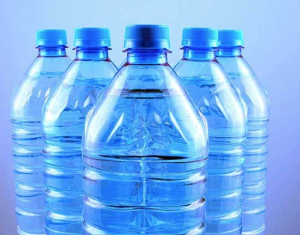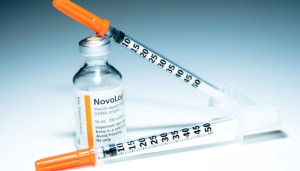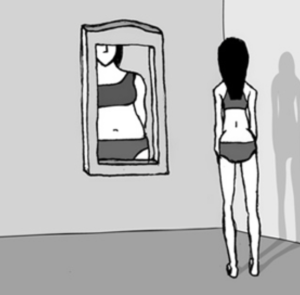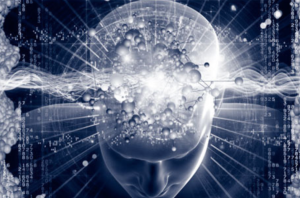Keep trying to shed the pounds by eliminating all fatty foods yet STILL no success? As today’s generation is highly centered on weight loss, we are constantly running into many dietary problems across the globe. Whether it be different kinds of diets such as Atkins, Paleo, Vegan, or Weight Watchers, we are eliminating major food groups in which our bodies’ need to survive. Highly concentrated fatty foods have become extremely controversial, even if they are the so-called “good fats”. So, do our bodies actually need fats (good or bad) to lose weight?
According to Livestrong, the US Department of Agriculture tells that 25-30 percent of calorie intake should be coming from fats in order to lose weight (Bruso). Well, I think there is much more that goes into this and what kinds of fats we are specifically talking about… According to Fitness Magazine, Barbara Roberts (MD director of Women’s Cardiac Center) tells that fats are a must when it comes to losing weight. Roberts discusses the different kinds of fats like mentioned earlier discussing the good fats vs the bad fats. In more scientific terms, saturated vs unsaturated… The best kind of fats to consume are polyunsaturated and monounsaturated; those of which you can seek out from avocados, corn, sesame seeds, peanut butter, almonds, olive oil…etc. To learn more about the health benefits granted through consuming these types of fats, check this out. According to Roberts, only two to three tablespoons of olive oil is recommended per day.
After researching the different types of fats and what is most highly recommended when trying to lose weight, I found an interesting experiment in which two twin brothers set out to test the affect cutting out fat and sugar had on the body. One twin completely cut out all sugar while heavily relying on sources of fat for proper fufillment, while the other cut out all sources of fat (except 2 percent in his daily consumption, still limiting his consumption by a great amount though) while relying on sugar. In order to eliminate possible confounding variables, the two of them did the same amount and type of exercise, and ate the same times and amounts when it came time to eat. After the course of 8 weeks, the brother who had cut out sugar lost a significantly greater amount of weight when compared to the one who only cut out fat.
In my opinion, this experiment was not as controlled as it was made out to be. The possible confounding variables are endless—such as the calorie content of the foods they were consuming otherwise, and the types of foods they were consuming (whether they were loaded with fibers or carbs… etc). If they wanted to get the most accurate results, they should have counted calories as calories are the biggest determinant of weight gain/loss, while at the same time cutting out sugar in one group and fat in the other, and then another group in which neither are consumed, but replaced calorie wise (hence: control group). Another thing that I should point out is that their findings were strictly relative; they never gave answers as to how MUCH weight was lost or how what kinds of foods they were relying on. That being said, correlation cannot prove causation, BUT, there is definitely something to be said about the fact that the brother who ate fats lost a significant amount of weight. Obviously, the sample size was small and it’s difficult to make judgements when that is the case, but it is definitely clear that while consuming fat you are more than capable of losing weight. Another possible confounding variable however is that the type (good or bad; unsaturated or saturated) was unmentioned…
If I were to conduct my own experiment to see the effects consumption of foods high in fat had on the body’s overall weight loss, I would have changed a few things, including my sample size and not just stick to two brothers… An ideal experiment in hopes of finding my answer would look like this: 4 groups, both of which eat the same diet outside of fats (carbs, proteins, vegetables, fruits) so that caloric intake is stable amongst all. They are all scheduled to eat the same time, being five small meals a day. Group 1 consumes the good fats. Group 2, does not consume any fats, but to make up for the calories has an extra source of protein that contains the same calorie content as the fat given to group 1. Group 3 consumes the bad fats (saturated). Group 4 does not consume any fats nor do they replace the calories with something else (control). Over the course of 8 weeks, measure the difference in weight between the two groups and see if the group fed good lost more weight (or any) compared to the others.
After having done my research, I think it is clear that fat is a must when trying to lose weight, that is ofcourse when coming from the good fats in recommended amounts. That isn’t to say that correlation equals causation because there are endless confounding variables that affect weight such as exercise, sleep, genes…etc and that you should go crazy on fat consumption, but atleast you are more aware of the good vs bad kinds to choose from. Next time you find yourself in panick and wanting to limit your fat consumption because you “MUST look good for Puerto Vallarta Spring Break 2016”, maybe you will take a step back, take a deep breath, and reach for the healthy, weight-shedding kind 🙂




 ccording to this article published in the
ccording to this article published in the 



 torage is therefore an ongoing process of reclassification resulting from continuous changes in our neural pathways, and parallel processing of information in our brains.” As learned in Wede’s lecture 10 on Storage and Retreival, our short term memory has a duration of roughly 12-30 seconds, but this can actually be altered through different mechanisms such as Maintanance Rehearsal (otherwise known as ROTE rehearsal). For instance, we can memorize a phone number for a quick instance and completely forget it within the next minute, but, if we keep going over that number however, then there is a better shot of it sticking in the long term.
torage is therefore an ongoing process of reclassification resulting from continuous changes in our neural pathways, and parallel processing of information in our brains.” As learned in Wede’s lecture 10 on Storage and Retreival, our short term memory has a duration of roughly 12-30 seconds, but this can actually be altered through different mechanisms such as Maintanance Rehearsal (otherwise known as ROTE rehearsal). For instance, we can memorize a phone number for a quick instance and completely forget it within the next minute, but, if we keep going over that number however, then there is a better shot of it sticking in the long term. nd turkey packed for lunch. However, after his diagnosis, my mom told me I had to drink less milk, if not cut it out of my diet entirely. I found this to be extremely odd considering the fact that I had grown up on milk and had yet to experience any of the negative side affects. That being said, diet can definitely not prove causation in the development of T1.
nd turkey packed for lunch. However, after his diagnosis, my mom told me I had to drink less milk, if not cut it out of my diet entirely. I found this to be extremely odd considering the fact that I had grown up on milk and had yet to experience any of the negative side affects. That being said, diet can definitely not prove causation in the development of T1. ell. This data was definitely accurate and well conducted as it was experimental AND observational. Eating disorders are not always biological but after damaging the body through repeated abuse, we can change our bodies responses to sugary foods.
ell. This data was definitely accurate and well conducted as it was experimental AND observational. Eating disorders are not always biological but after damaging the body through repeated abuse, we can change our bodies responses to sugary foods.

 While chemicals in the brain play a huge role in determining our love paths, psychology also plays a big part in why we fall in love. According to a
While chemicals in the brain play a huge role in determining our love paths, psychology also plays a big part in why we fall in love. According to a 

